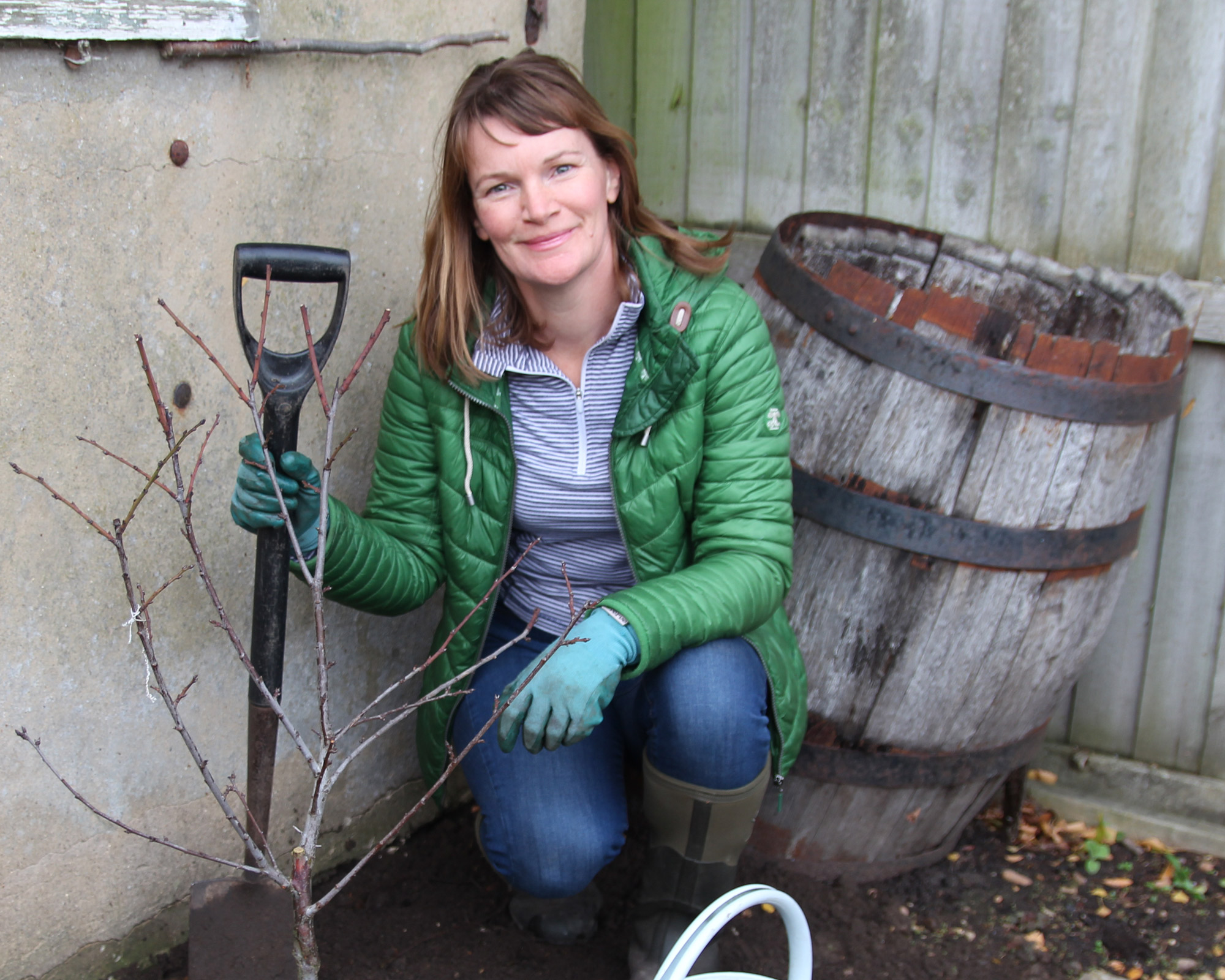How to grow broad beans: add these low-maintenance crops to your veg plot
Enjoy months of succulent pickings, as we explain how to grow broad beans that are packed with easy goodness
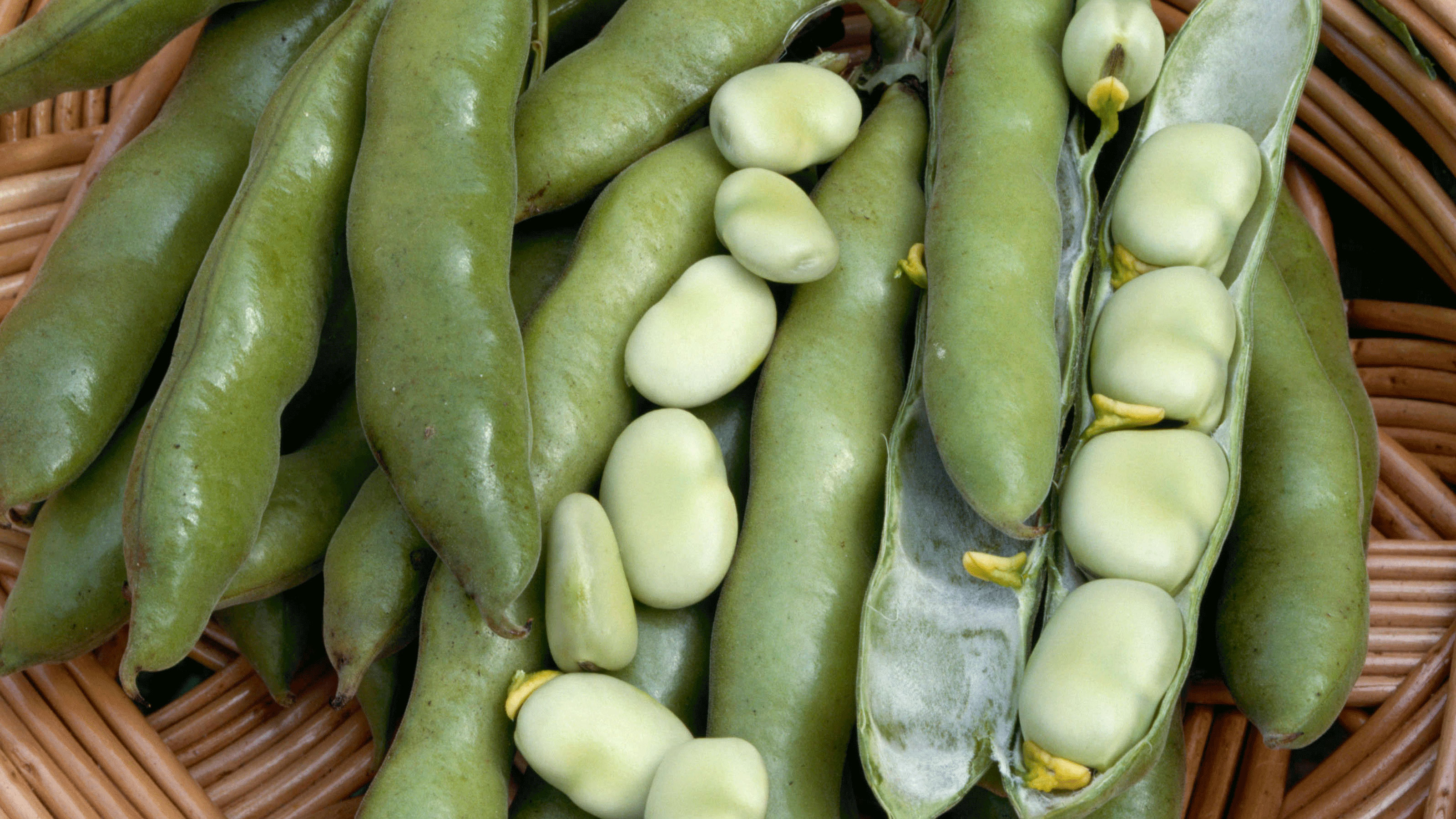
It is surprisingly easy to learn how to grow broad beans. Just grab a sheltered spot or some pots, some sunshine and the right support, and you’re all set for tender beans through summer and beyond.
Quick to germinate, with scented flowers and crops that are loaded with nutrients, broad beans are lovely low-maintenance plants. They also require little care once you have got them going. Indeed, they are the hardiest of the bean family.
The trick is picking the right type for the time of year, and making sure the spot you choose is sunny and well protected. Here we show you how to grow broad beans, plus how to harvest them at the right time for the most rewarding pickings, whatever your space.
Want to grow some other veg alongside your broad beans too? Head over to our guide on how to grow garlic for more expert tips.
Know your broad bean types
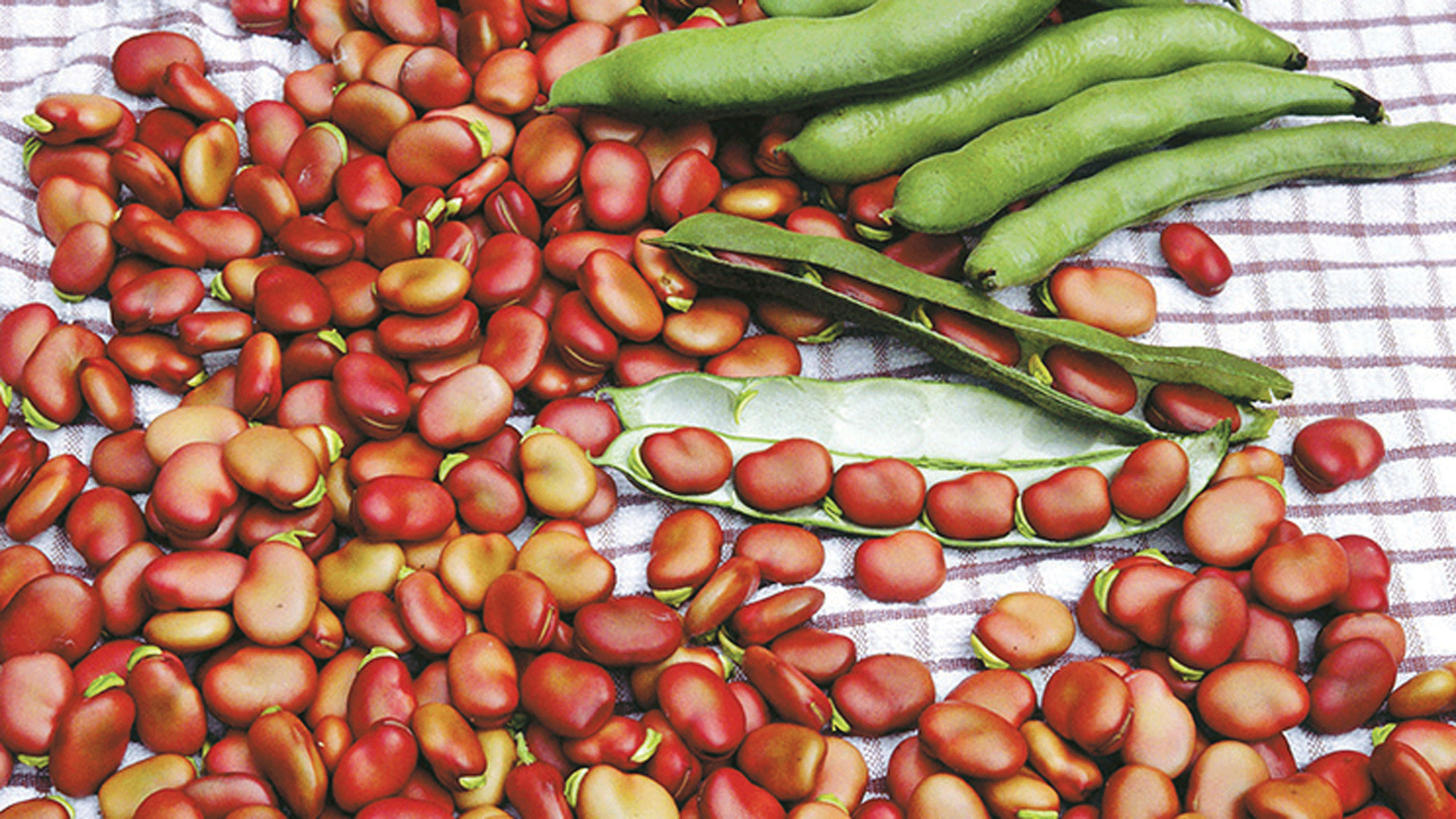
For colourful broad beans, try 'Red Epicure'
When planning how to grow broad beans, remember there are four main types.
- Seville, which is an early maturing, autumn-sown type.
- Longpod (such as ‘Exhibition Longpod’), with seven or so seeds per pod.
- Windsor (such as ‘Green Windsor’), the standard spring-sowing types, with four-seven seeds per pod.
- Fan-podded (such as ‘The Sutton’), with multiple pods per cluster on compact plants.
Seed colour varies a lot. There are green-seeded varieties like ‘Imperial Green Longpod’ and white-seeded types such as ‘Witkiem Manita’. Others (such as ‘Red Epicure’ and ‘Karmazyn’) yield eye-catching red beans.
Heritage variety ‘Crimson Flowered’ produces striking scarlet blooms before cropping.
When to plant broad beans
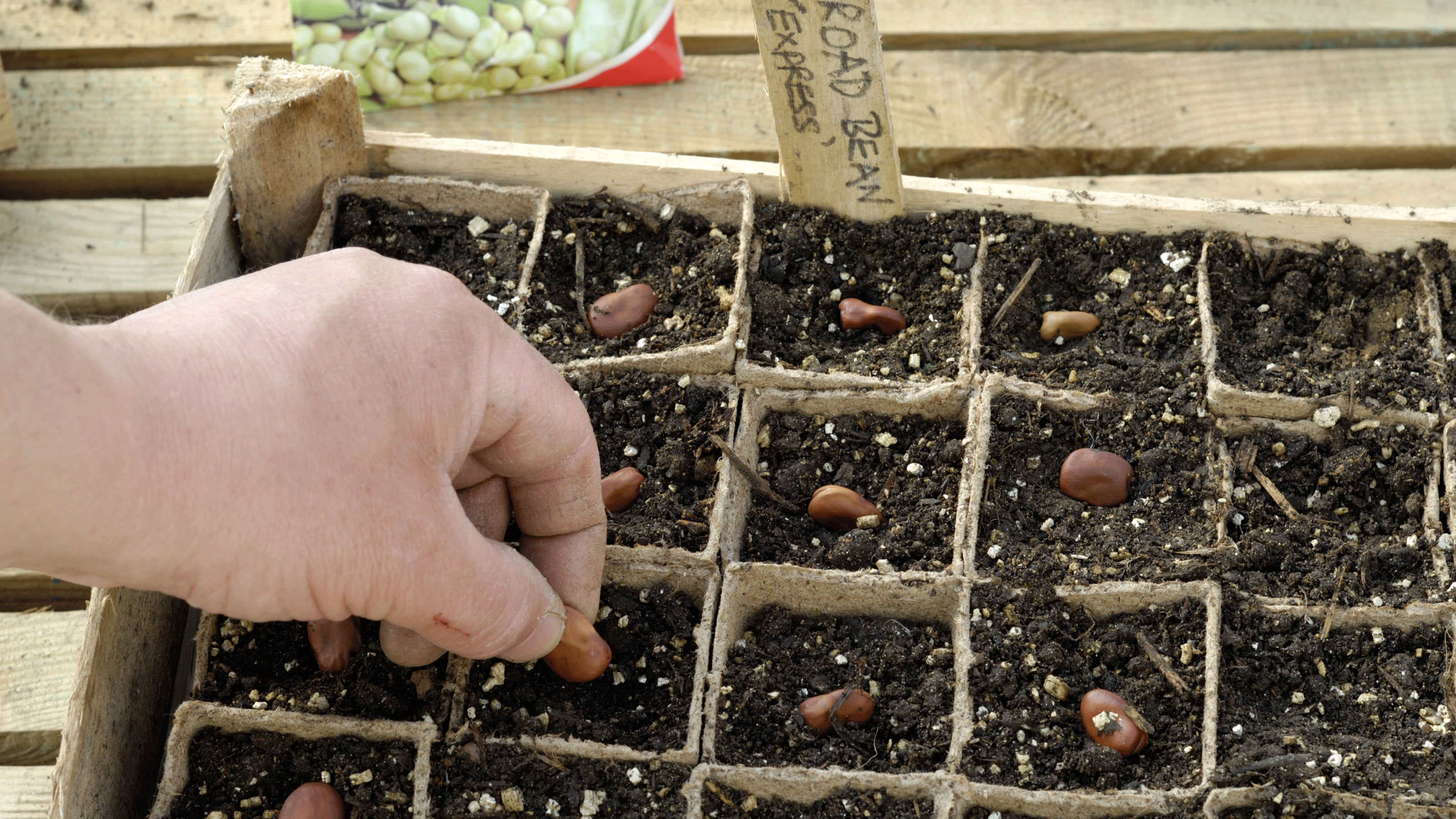
Spring-sown broad beans should germinate in two-four weeks
If you're learning how to grow broad beans, you'll want to know that the main time to sow broad beans is between March and May. Some types can be started earlier in February under cloches or in a cold greenhouse for an earlier crop – see our greenhouse ideas for more on this. You can make later direct sowings straight into the ground.
Check the packet on your seeds for guidance on how to grow broad beans, but don’t worry if you haven’t started yet. Spring-sown crops are ready to pick in about 15 weeks (autumn sowings take around 30 weeks), and if you make successive sowings you can be sure of continued crops for months.
As well as spring-sown broad beans that will crop over summer, look for varieties like ‘Luz de Otono’ that you can sow later in summer.
It’s also worth sowing again in autumn. In sheltered gardens with well-drained soils, broad beans like ‘Aquadulce Claudia’ can be sown in November. This means that next May, you’ll hit the ground running and see crops even sooner! Autumn sowings germinate inside four weeks, and young plants come back to life in spring.
Just remember cloche protection in cold areas or harsh winters. Our guide to how to protect plants from frost will help here.
How to grow broad beans
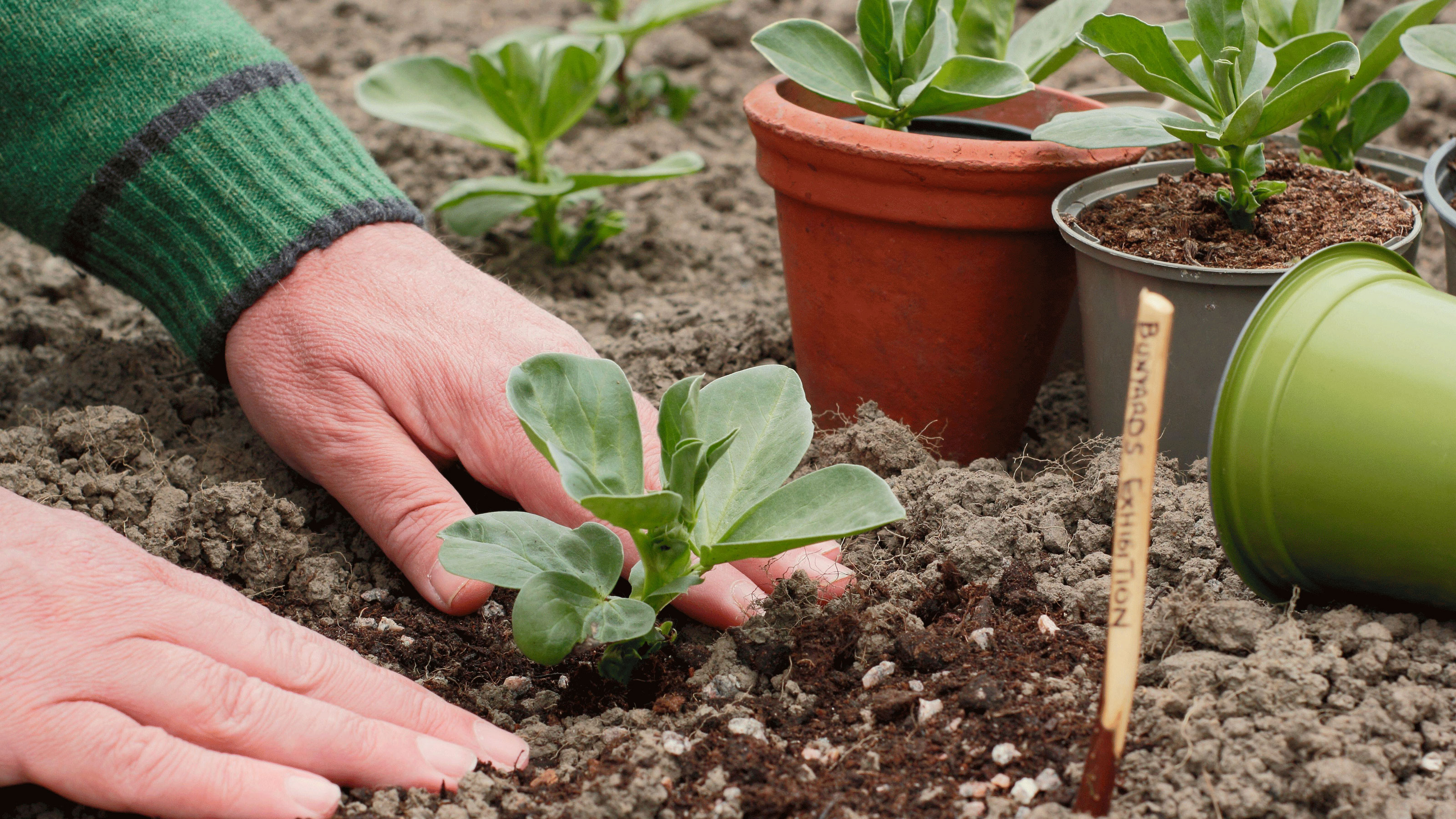
Spring sowings of broad beans can be started in pots and planted out late May or June
Given the range of broad bean varieties (and start dates), you can eat fresh crops from early summer until October.
Any sowings made in April will have plenty of time to mature over the peak warm season. Hardiest types germinate at 5°C (41°F); those marketed for sowing in April are more tolerant of drought.
1. Sow your seeds
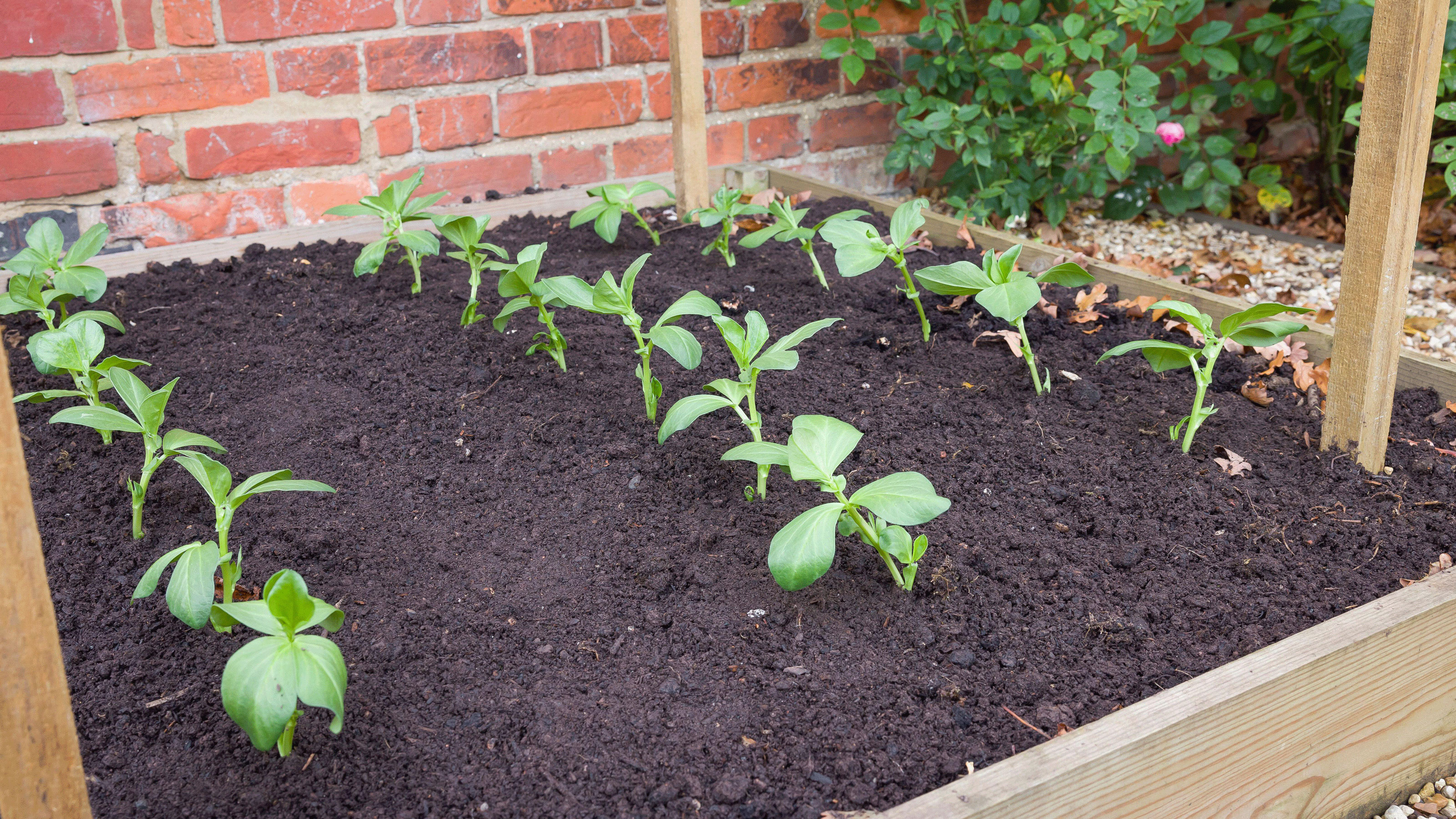
Plant out after six weeks and space out around 9in apart if you use raised beds
Pot your spring sowings for transplanting later. Broad beans grow extensive root systems so you must sow deep, at least 5cm (2in) down and 20cm (8in) apart, depending on the variety.
In open ground, sow in single rows 18in (45cm) apart or double rows 9in (23cm) apart with 2ft (60cm) between each double row.
In raised garden beds, rows can be spaced 9in (23cm) apart. Dwarf varieties can be sown 15cm (6in) apart.
A good trick when attempting how to grow broad beans is to sow extra seeds at the ends of rows for plants – these can be moved to fill gaps created by seeds that don’t germinate.
2. Start seeds off in toilet roll holders
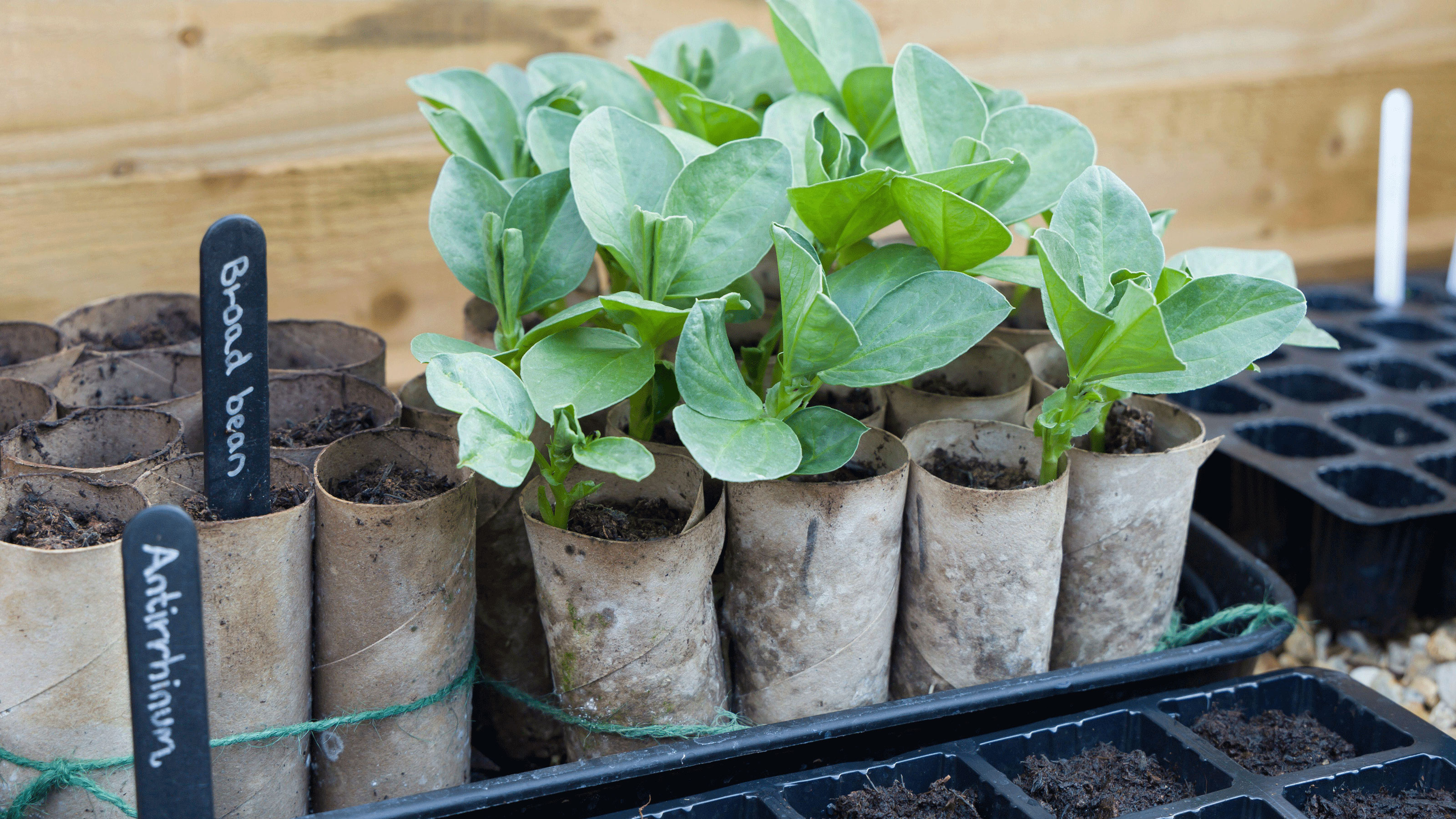
Good old toilet roll tubes can be used to keep young broad bean plants well contained – they make great eco-friendly pots!
As you'll quickly discover when you learn how to grow broad beans, they have long roots. So if you are not sowing in situ (where they are to grow), you will get great results if you start them off in toilet roll holders.
That’s right, friends: old loo rolls give broad beans (and all beans) great support and freedom until they are ready for planting out.
3. Leave pot raised plants to mature
Pot-raised plants are useful where soils are wet or rich in clay; these soils can lead to seeds rotting.
Transplant seedlings out at 8in (20cm) spacings in blocks or rows. Plant out after around six weeks, when the root has filled the pot.
There's more tips on how to transplant seedlings in our guide.
4. Support your broad beans as they grow
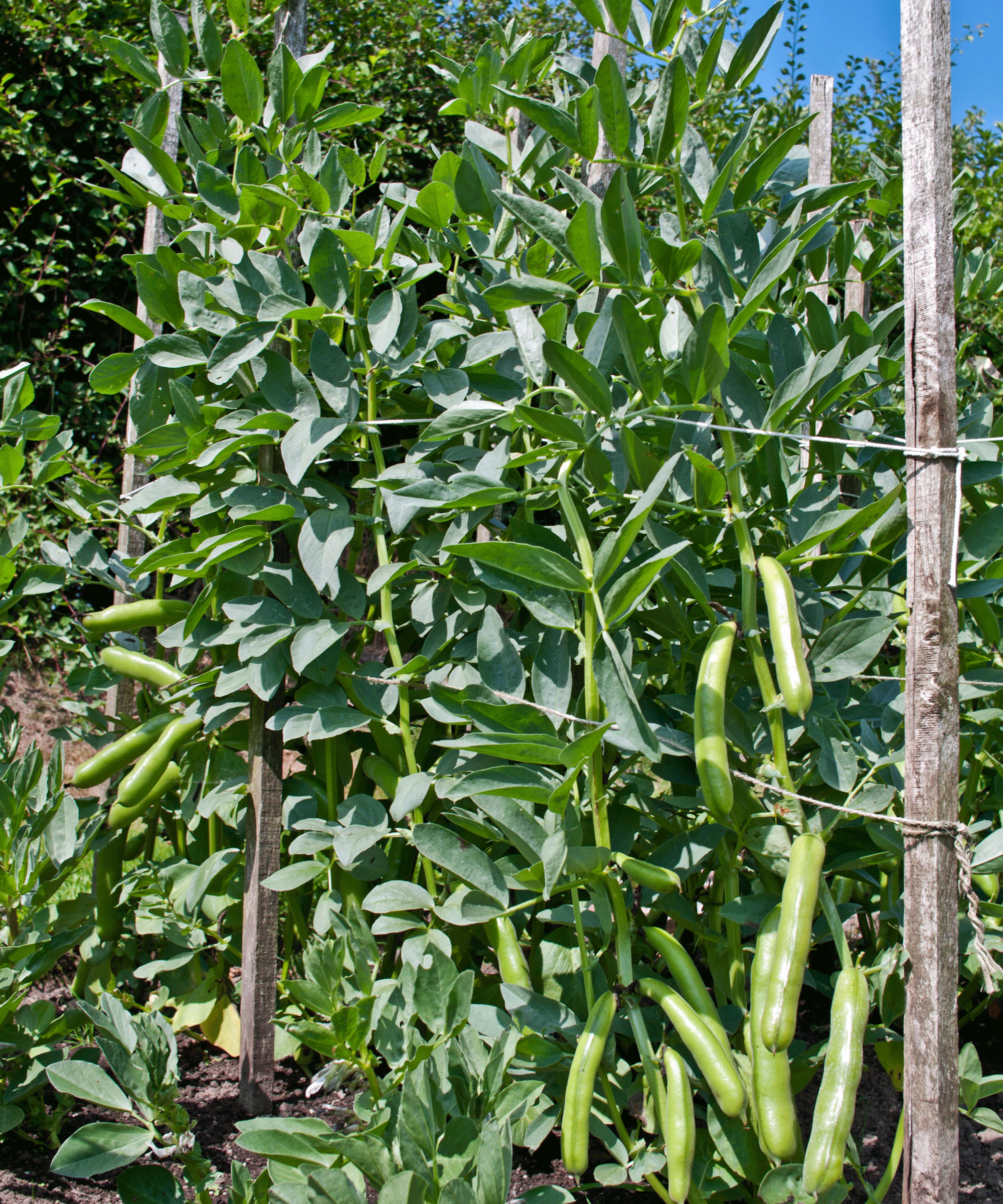
Taller broad bean varieties tend to flop as they grow, so keep them well supported with stakes and twine
One of the key things to remember when it comes to how to grow broad beans successfully is that taller varieties will need supporting, because broad beans (unlike French or runner beans) do not climb and tend to flop as they grow tall. Attach strings to sturdy stakes placed 4ft (1.2m) apart. Secure horizontal levels of string at 1ft (30cm) intervals.
Smaller cultivars are more likely to create their own support, especially if planted in double rows. Some varieties are more upright; try a dwarf or smaller broad bean such as ‘The Sutton’ for more compact broad bean growth.
Our climbing plant support ideas will help here.
Where to grow broad beans
The main thing to remember when learning how to grow broad beans is to choose a well-drained site that has been thoroughly dug and preferably improved with garden compost or well-rotted manure. Broad beans do best in fertile, moderate soils.
A sheltered site is best for autumn sowings, but spring sowings should be OK in an open, sunny spot. However, take care not to grow broad beans in the same spot two years running, as this might increase the chances of root rot. Don’t be tempted to sow in very cold conditions or when the soil is waterlogged.
Apart from that, broad beans are pretty low maintenance and not overly fussy. There are more low maintenance garden ideas over in our feature.
How to care for broad beans
Unless rainfall has been high, water well until plants are established. Do this again once they start flowering, and again two weeks later. This will increase pod set, and your overall yield will be much better. Watering at other times is only needed during prolonged droughts, but further irrigation is wise on light soils.
Flowers require pollination from bees. You may see some species nibble into the base of flowers (this is called ‘robbing’). Don’t worry – other bees will pollinate the flowers for you. Follow our bee-friendly plants guide for some key plants that will attract bees to your veg plot.
Broad bean pests and problems
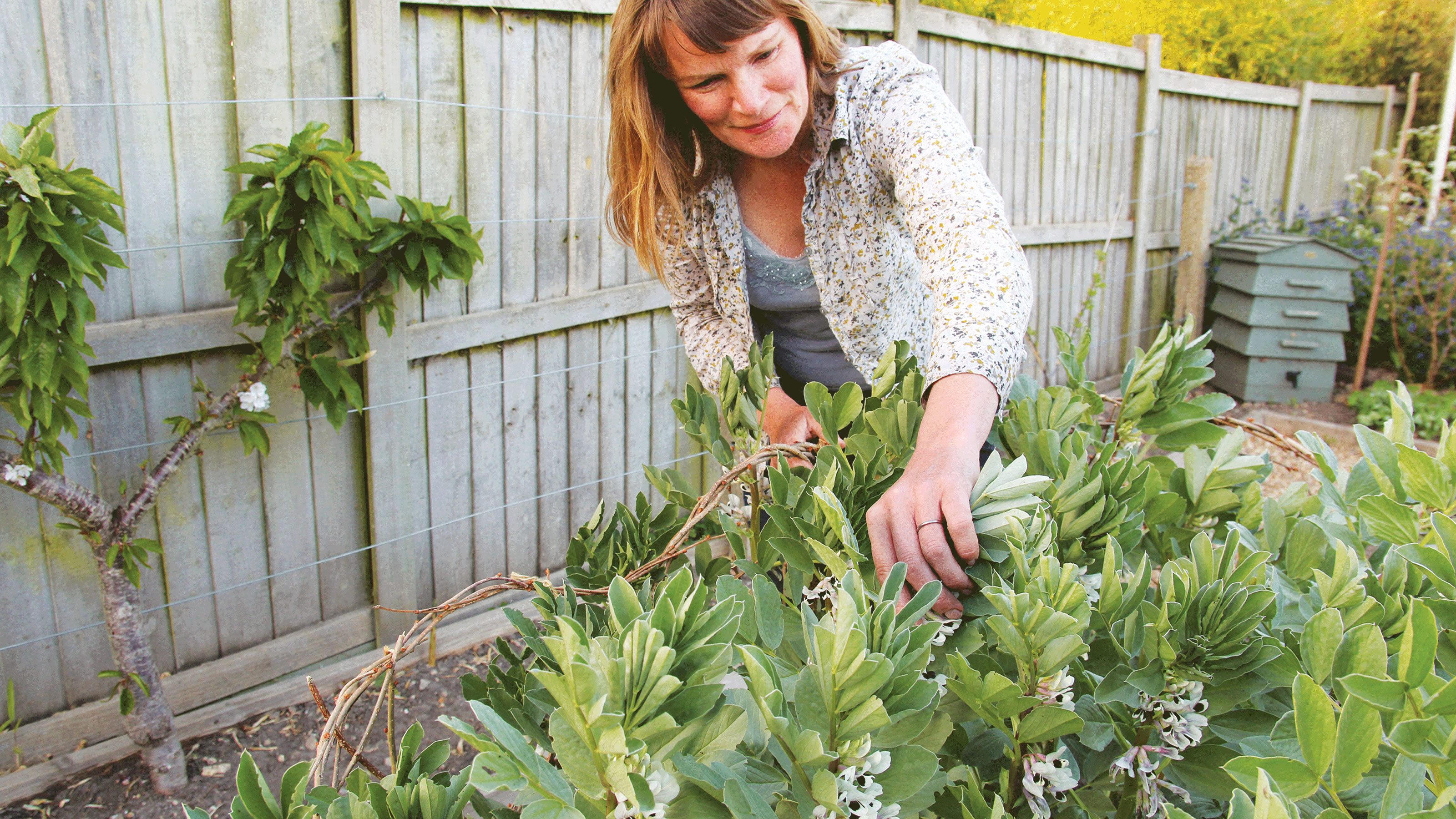
Pinching out tips is a good way to prevent blackfly on your young broad bean plants
Young broad bean plants are at risk from blackfly, a pest that is drawn to the tips and new growth. This will look like thick black clusters around the new leaves at the tops of plants, the stems and the undersides of new leaves.
To keep on top of this problem, pinch out tips and top growth when the lowest truss of blossom has formed small pods. As well as reducing problems with blackfly, this will also help to promote fruit set.
If growing conditions are very wet, you might see brown patches on broad bean leaves, called rust. These aren’t overly alarming - just remove any discolored leaves.
However, be careful if the patches seem to be spreading, as the plant might be suffering from chocolate spot. This can spread quickly and in severe cases can lead to plant collapse.
To prevent this problem, space plants generously, avoid damp or humid sites, and keep the ground weed-free. There are lots of ways to tackle unwanted plants – our guide to how to weed a garden shows you how.
When to harvest broad beans
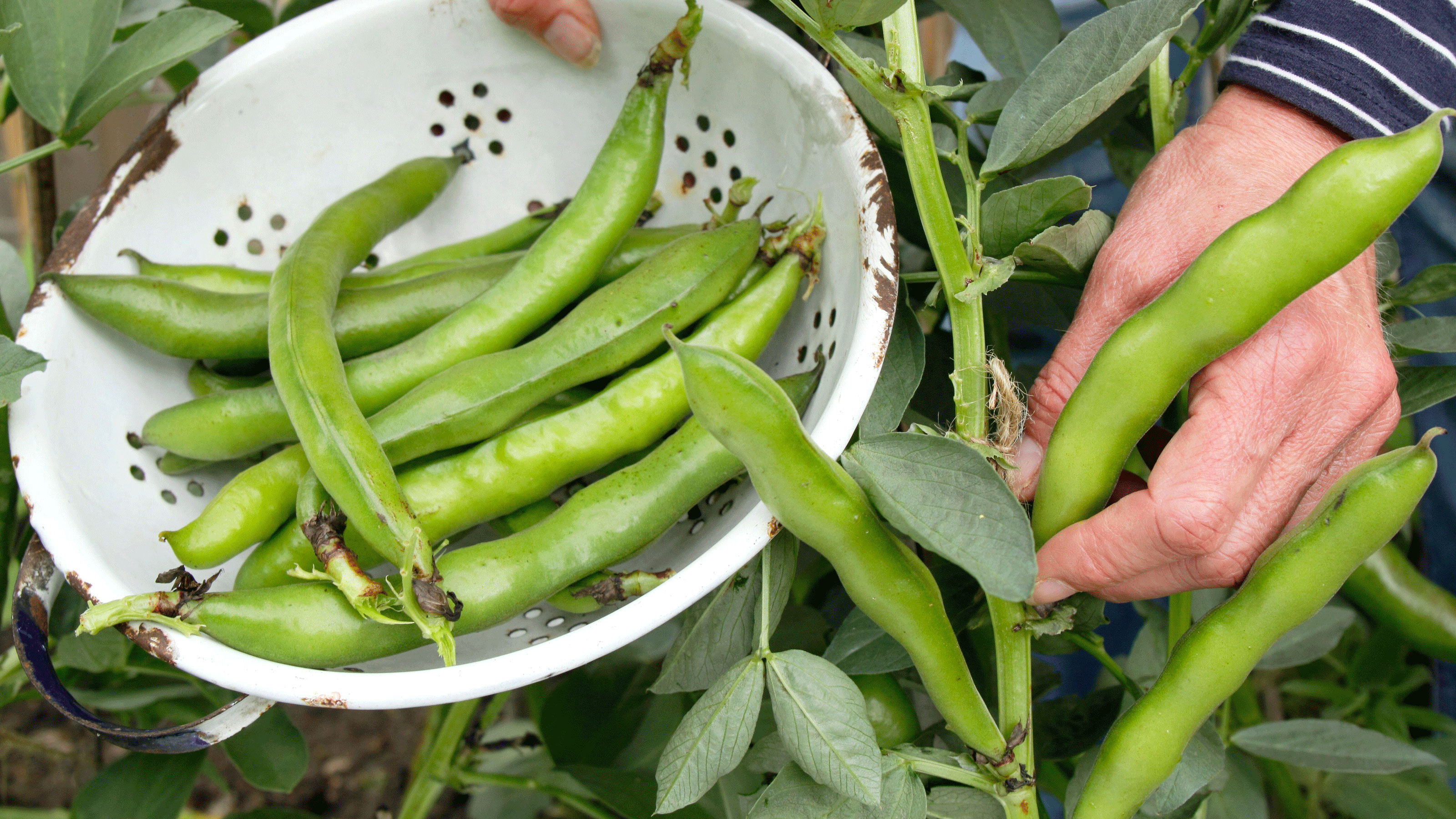
Don't wait too long to pick your broad beans - as soon as you can feel the beans, you can pick them
Now you know how to grow broad beans, you need to know when to harvest them too. To pick your broad beans at their best, remember: tiny and tender gives the best quality. As soon as you can feel the beans through the pods, they are ready to pick. Harvest in stages, starting with the lowest pods. You can pick pods when they are 8cm (3in) long and cook them whole.
When picking pods to shell, wait until the beans are visible through the pod, but don't leave them too long. The bean is at its best when the ‘scar’ (the mark on the edge of the bean) is white or green – when this turns brown, the beans get tougher.
If you have a few ‘old beans’ then fear not, as they are not wasted! You can make broad bean pâté: cook and remove the outer shells, then whizz up with some mint, lemon juice, salt, pepper and olive oil. You’re welcome!
Once harvested, cut down old plants but leave roots in the soil. The nitrogen-fixing root nodules rot down for added goodness in the ground.
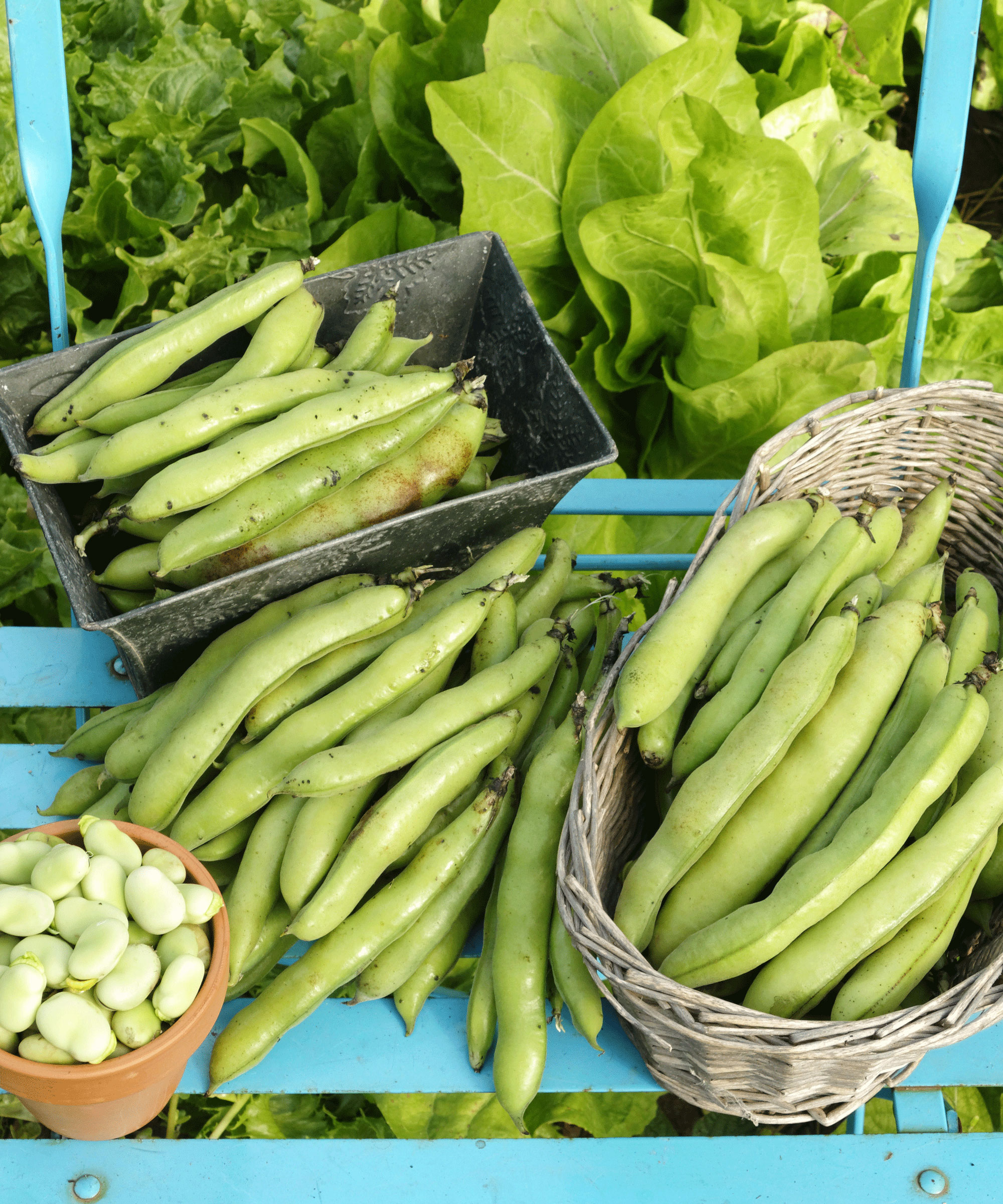
Keep picking your broad beans at regular intervals as they don't all ripen at the same pace
Six broad bean varieties to try
1. The Sutton
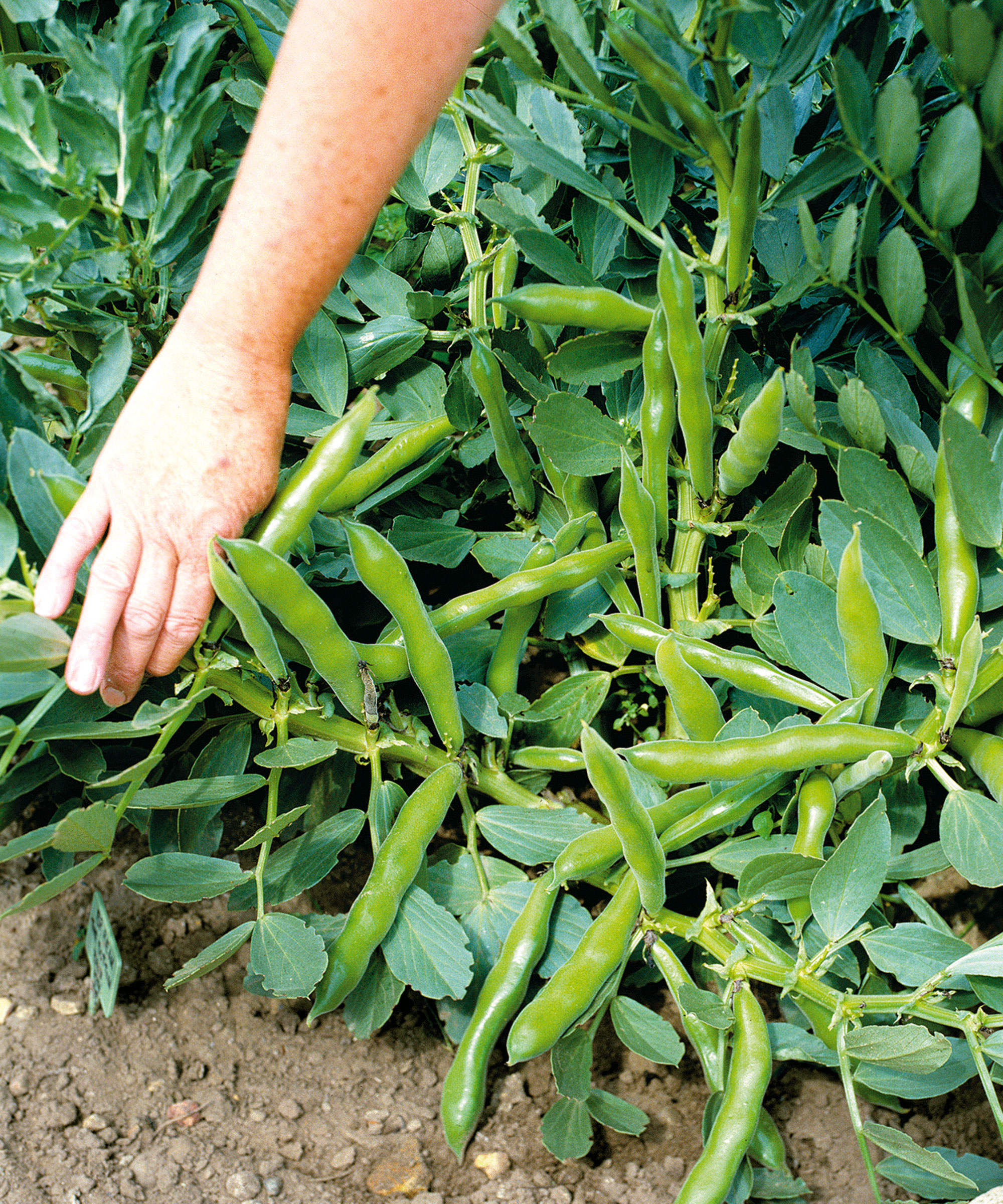
Broad Bean 'The Sutton'
'The Sutton' is a great dwarf variety, which only grows to 18in (45cm). An abundant cropper, early maturing, suitable for exposed positions, and ideal for successional sowings.
2. Witkiem Manita
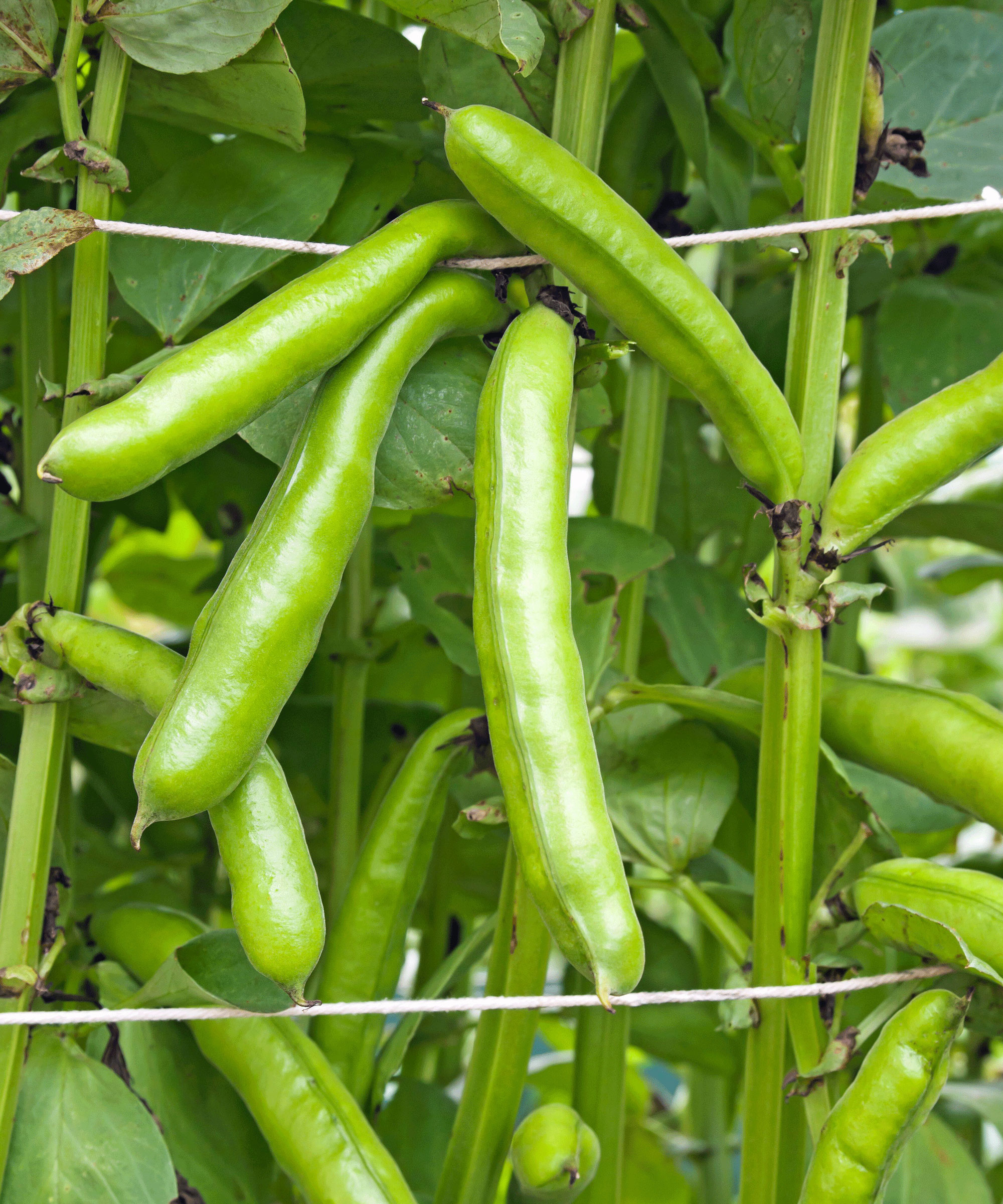
Broad Bean 'Witkiem Manita'
You can sow 'Witkiem Manita' in autumn or spring. It's fast growing, with short, well-filled pods of white beans. Excellent source of vitamin C, folate and fibre.
3. Masterpiece Green Longpod
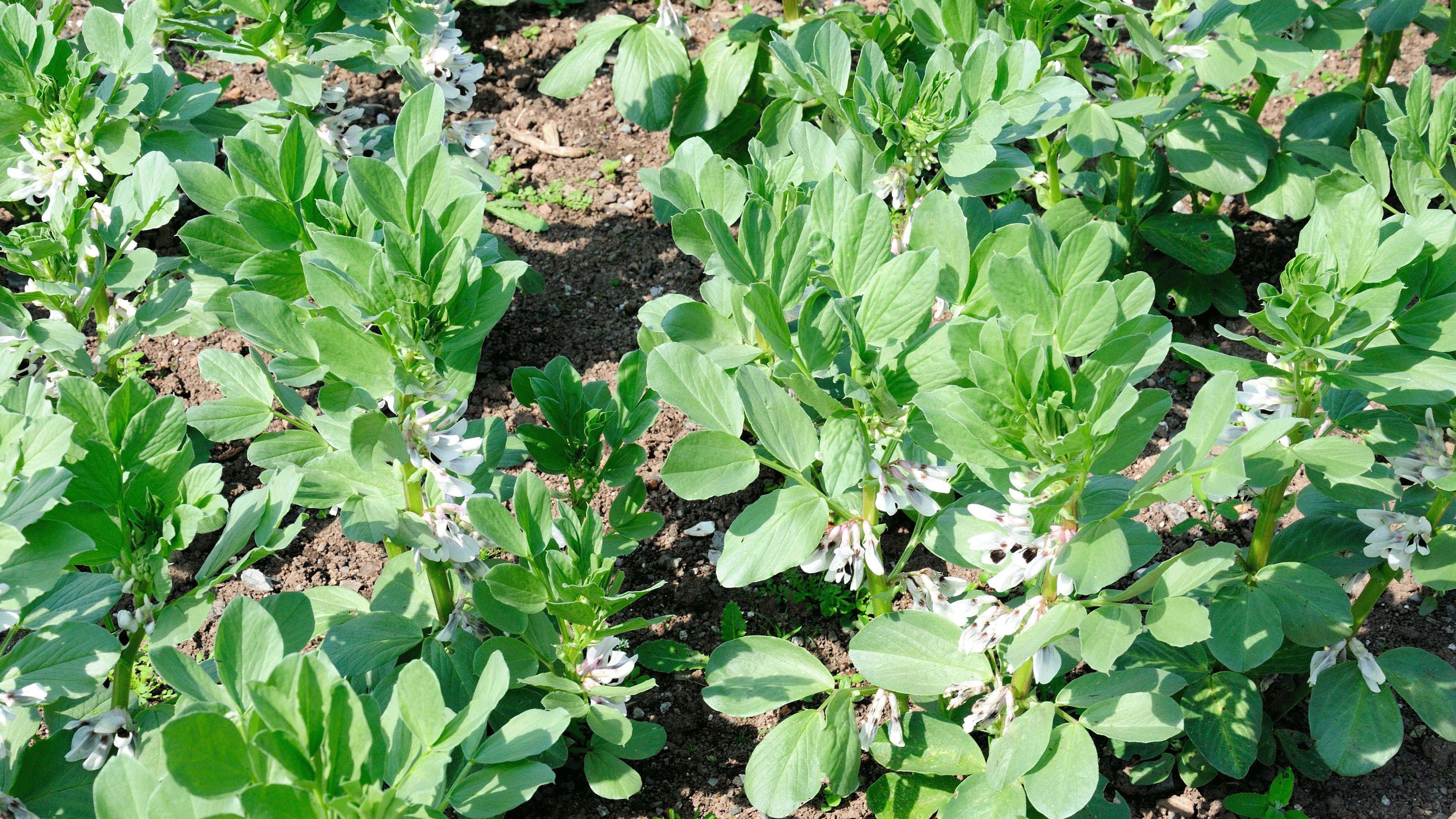
Broad Bean 'Masterpiece Green Longpod'
This variety gives an excellent length of pod, often containing six or seven large green juicy beans. 'Masterpiece Green Longpod' is also excellent for deep freezing.
4. Aquadulce Claudia
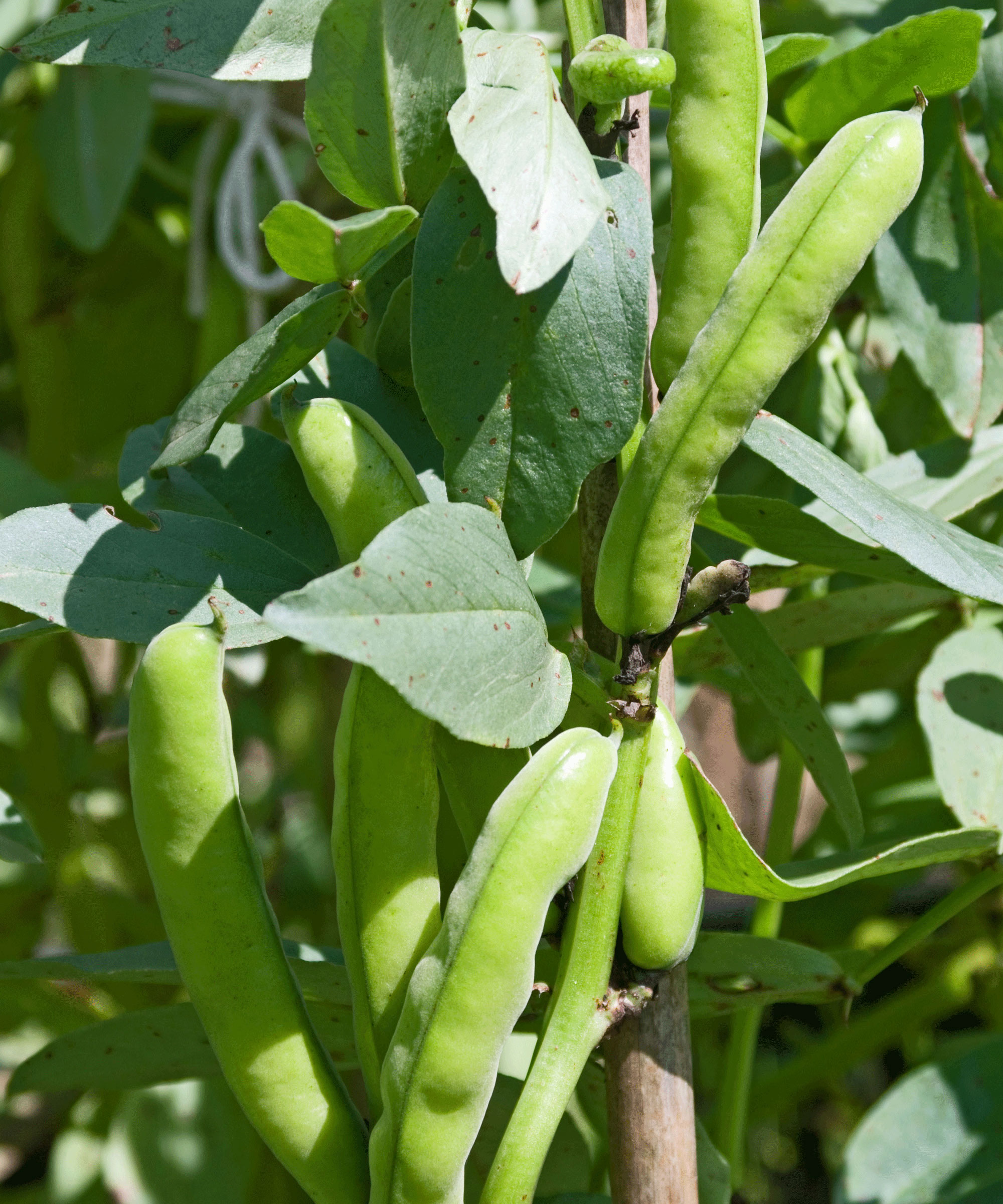
Broad Bean 'Aquadulce Claudia'
This is the benchmark bean for autumn sowing. 'Aquadulce Claudia' is the best broad bean to try for overwintering. Super-hardy, long podded and early to mature.
5. Meteor
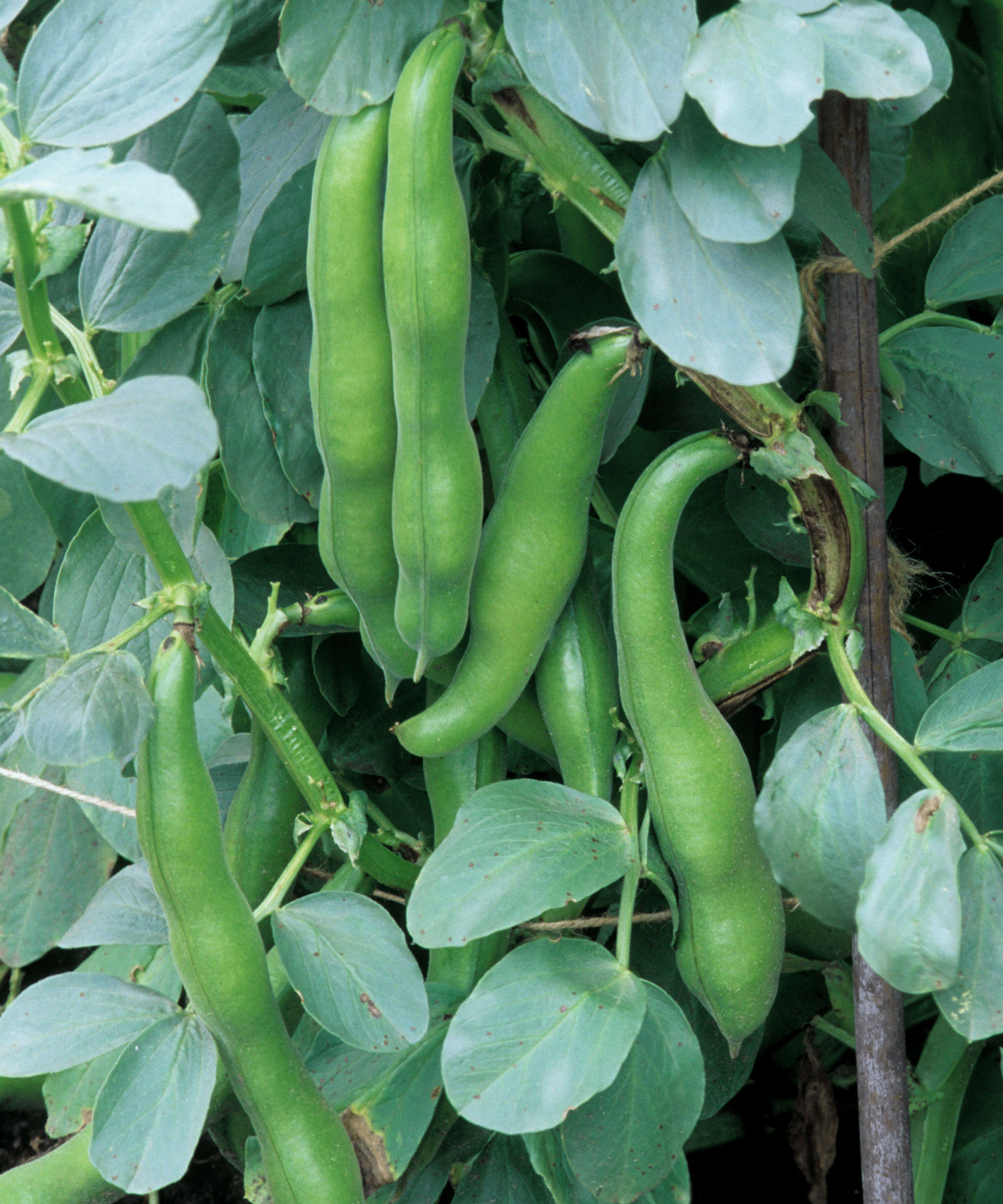
Broad Bean 'Meteor Vroma'
This is another good overwintering option. 'Meteor' (and 'Meteor Vroma') is a richly yielding plant that produces long pods, and the beans are excellent eaten young.
6. Crimson Flowered
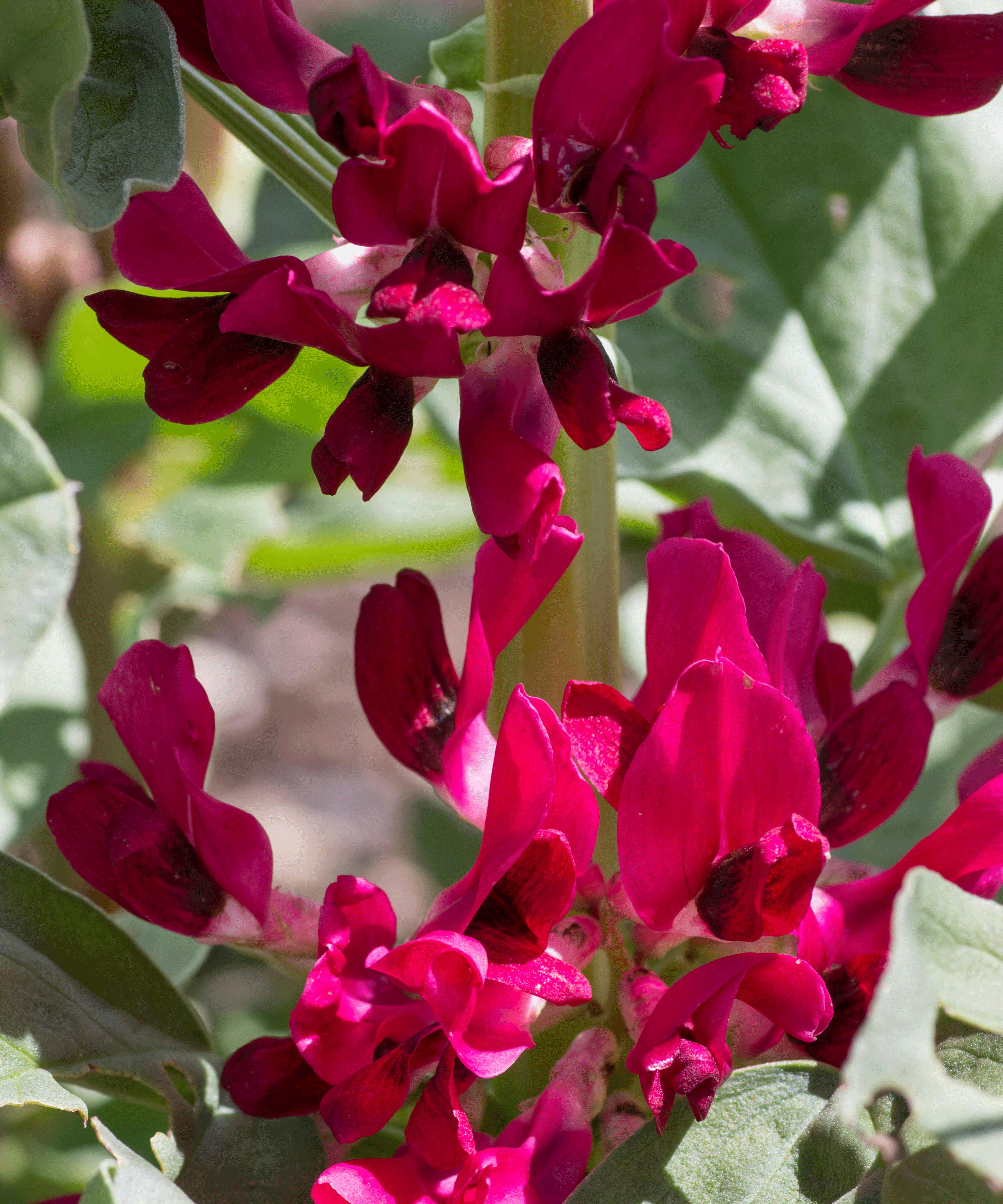
Broad Bean 'Crimson Flowered'
'Crimson Flowered' is a heritage broad bean that produces striking red flowers and tasty beans in short, upright pods. Pretty as well as prolific.
Where to buy broad beans
Broad beans are readily available from a wide range of suppliers. Use our quicklinks below to head straight to leading suppliers, and try some of our recommendations on how to grow broad beans in your garden. Enjoy!
Where to buy broad beans:
- Shop broad beans at Amazon
- Shop broad beans at Crocus
- Shop broad beans at Dobies
- Shop broad beans at Kings Seeds
- Shop broad beans at Mr Fothergills
- Shop broad beans at Suttons
- Shop broad beans at Thompson & Morgan
- Shop broad beans at Waitrose Garden
- Shop broad beans at You Garden
Can I eat other parts of a broad bean plant?
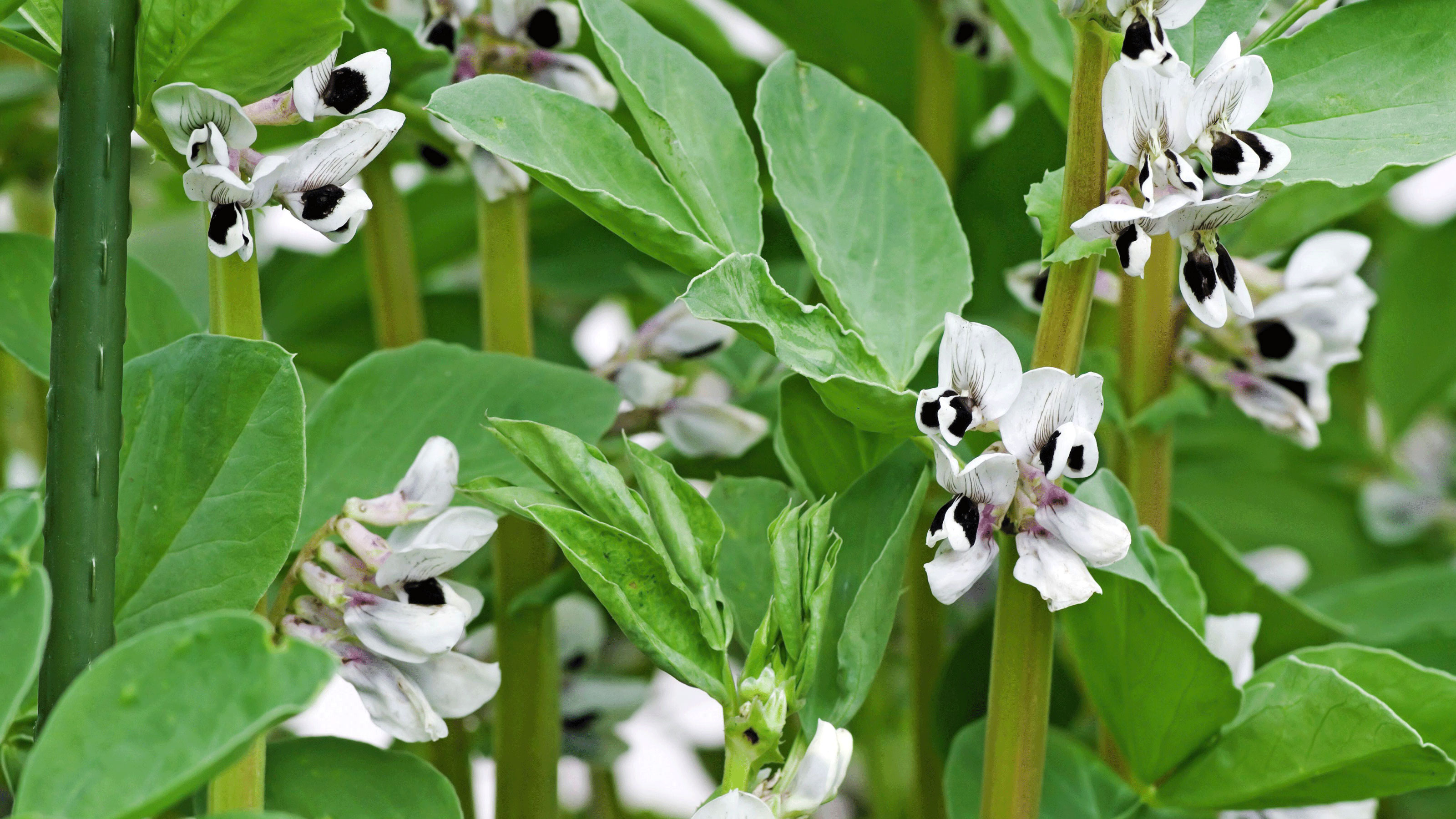
It's not just the beans that are edible
Broad beans are at their best when picked small and eaten fresh. But there are parts that can be eaten even sooner. When you pinch out the growing shoot tips to deter blackfly, you can eat these leafy bits like spinach; they are lovely sautéed with butter.
Immature pods can also be steamed and eaten whole. Harvest just a few once they are pencil thick (before the cotton wool-like pod innards have had time to form). Drench in some cheese sauce and oven-bake. Then just wait for your beans!
Want more inspiration for growing veg in your garden? Head over to our small vegetable garden ideas and find out how to grow fruit and veg in any space.
Lucy studied horticulture at Writtle and Wye colleges, before going on to be a Horticultural Advisor at RHS Wisley for 6 years. Lucy has been Head Gardener on a 100-acre private Essex estate for the past 7 years, but she still writes regularly for titles such as The Garden, Gardeners’ World, The Guardian and Amateur Gardening. Lucy has also contributed to various RHS books, being sole author of the RHS Step by Step Veg Patch.


